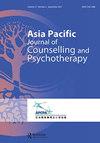Measurement invariance of the almost perfect scale-revised in the Philippines and the United States
IF 0.5
4区 心理学
Q4 PSYCHOLOGY, CLINICAL
Asia Pacific Journal of Counselling and Psychotherapy
Pub Date : 2020-07-02
DOI:10.1080/21507686.2020.1808027
引用次数: 0
Abstract
ABSTRACT The Almost Perfect Scale-Revised measures perfectionism using three subscales: Standards (i.e., expectations set by the self), Discrepancy (i.e., self-criticism related to not reaching these expectations or standards), and Order (i.e., tendency to appreciate orderliness). Measurement invariance was tested using undergraduate students from the Philippines (N = 487) and the United States (N = 396). Exploratory structural equation modelling models showed reasonable fit for a three-factor structure, and metric invariance was supported. Results suggest that we can trust comparison of correlation/regression coefficients across the two samples in addition to any comparisons between associations of predictors and various outcomes between the two samples.菲律宾和美国修正的几乎完全标度的测量不变性
摘要:几乎完美量表修订版使用三个分量表来衡量完美主义:标准(即自我设定的期望)、差异(即与未达到这些期望或标准有关的自我批评)和秩序(即欣赏有序的倾向)。测量不变性使用来自菲律宾(N=487)和美国(N=396)的本科生进行测试。探索性的结构方程建模模型显示出对三因子结构的合理拟合,并且支持度量不变性。结果表明,除了预测因素的关联和两个样本之间的各种结果之间的任何比较之外,我们还可以信任两个样本的相关性/回归系数的比较。
本文章由计算机程序翻译,如有差异,请以英文原文为准。
求助全文
约1分钟内获得全文
求助全文

 求助内容:
求助内容: 应助结果提醒方式:
应助结果提醒方式:


